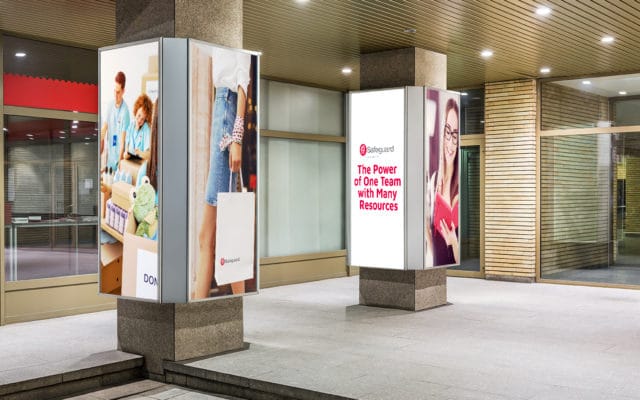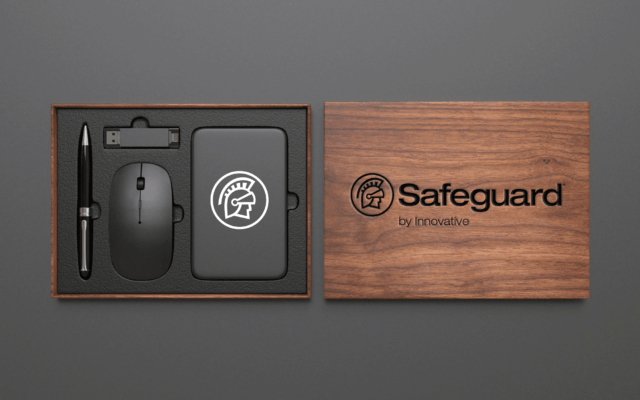How To Promote Your Business At Events: 9 Easy Tips
By Drew Galvin on May 17, 2022

How to gain more exposure and reach new customers is the burning question on every business owner’s mind. No matter how big or small your marketing budget may be, it takes a lot of time, creativity, and effort to expand your reach. The good news is you can use events, trade shows, and business expos as a springboard for building momentum.
In this blog, we’ll explore how to promote your business at an event by looking at nine of the top ways to do so.
#1: Determine The Type Of Event That’s Right For You
People go to events for different reasons. Knowing what the event is will help you gain a better understanding of the audience likely to attend the event. From there, you can frame your message and event marketing tactics accordingly.
If your business operates in a broader market (e.g. restaurants, apparel companies, etc.), then almost any fair or festival could be a good choice. However, if your business is more niche (e.g. a luxury health and wellness brand, vegan bakery, etc.), you’ll want to think about how your customers like to spend their time and what hobbies may interest them.
#2: Determine If The Event Is Worth Your Time
The next step in business event marketing is to ensure the event is worth your effort. To gain a better understanding of how to promote your business at an event, you may want to contact the event organizers* and ask questions such as:
- How often does the event occur?
- What’s the average attendance of the event?
- What is the typical demographic of attendees?
*Contact information for the event’s organizers will likely be on the event’s website or Facebook page.
Why Should You Conduct Audience Intel Before Attending An Event?
It’s important to understand the demographics of the attendees so you know the event is worth your time. Knowing who your target audience is and comparing that to the attendee information will help increase your return on investment while also reducing the efforts and costs of marketing to an incorrect audience.
Let’s say your business operates in the supplement space and sells nutraceuticals primarily aimed at women in the 40-65+ age demographic. You wouldn’t want to try marketing your product at an event that primarily attracts young men in the 18-25 age demographics.
#3: Decide On Your Level Of Involvement
Before attending an event, think about what you’re hoping to accomplish by attending. Are you looking to have a booth? Are you more interested in casually networking and walking the event floor? These questions will help you understand what type of marketing materials you’ll need.
Whether you’re set to have a booth or you’re just networking, you need to be equipped with the appropriate branded marketing materials. From custom printed materials like brochures and business cards to pop-up displays, tents, and banners, having the right printed materials and promotional items with creative design will help you make a positive first impression.
Plan ways to drive traffic to your business even if you won’t be able to attend the event. For example, if you own and operate a restaurant, consider offering a free appetizer or a discounted meal for people who show proof of event attendance at your establishment.
#4: Sponsor An Event
Wondering how to promote your business in the community? Sponsoring an event is a great way to do this. Even if you’re not planning on having a booth or networking at an event, something as simple as becoming an event sponsor can get your brand in front of hundreds or even thousands of people, depending on the size of the event.
Sporting events and music festivals are two popular choices when looking to sponsor an event, as they often bring in a wide range of people from all walks of life. Also, since you can’t be everywhere at once, sponsoring an event is a great way to build brand awareness without attending an in-person marketing event.
#5: Promote The Event On Social Media
Why is brand promotion important? Because it generates awareness around who you are and what you do as a business. A great way to promote your business at an event is through social media. Use social networks like LinkedIn, Facebook, Instagram, and Twitter to let your audience know that you’ll be at a certain event.
Use these platforms to create excitement about what you’re going to give away or sell there. You could even live stream from the event for added exposure.
#6: Host A Giveaway
Even in the hustle and bustle of an event, people love receiving merchandise! A fun way to promote your business at an event is by hosting a giveaway. It’s an interactive way to encourage engagement and boost your following. Not only that, but when people win something, they’re likely to remember your company in a positive way.
Consider drawing upon the power of social media and require the attendees participating in the giveaway to take a picture at your booth, like your social media page, and use a unique hashtag relevant to your business. These steps help to establish a connection with both the event audience and social media followers.
#7: Collect Attendee Information
Talk with attendees to gain an understanding of their needs and challenges. Take notes, and ask for their contact information. Then provide your business card so the attendee has a way to contact you rather than just waiting for you to initiate contact.
Some attendees may be hesitant to share their contact information. Provide an intriguing reason for them to give you their information, such as through a raffle, contest, or other type of giveaway. Be sure to provide a branded item, such as a pen, for the attendee to use when signing up. Encourage the attendee to keep your pen once they have filled in their information. You never know the next time they’ll need to sign something, and it’s a simple way to keep your brand top of mind after an event.
#8: Learn From The Event
There’s no better way to get a feel for what works and what doesn’t in your industry than by getting out there and engaging with your community. Don’t just push marketing materials at event attendees, ask questions and find out what the attendees need. Pay attention to the attendees with whom you are speaking as well as to the other organizations with whom your prospects are speaking.
Learn how to promote your business at an event from former sponsors or attendees. It’s often easy (and even encouraged) for event organizers or staff members of venues hosting an event to provide tips and share their wisdom. Don’t be afraid to take advantage of opportunities like these!
#9: Thank The Event Organizers
Part of attending, sponsoring, or promoting your business at an event is making sure you’re invited back to future events. A simple and effective way to do this is to create a positive lasting impression with the event organizers, and something as simple as thank you notes can do just this. After thanking organizers and speakers, use follow-up emails and conversations as opportunities for further networking and promotion of your business.
Gestures like these help show your appreciation, and small acts of gratitude can also help create future opportunities at other events.
How Branded Merchandise Can Help You Promote Your Business
As noted, branded merchandise is a powerful component when considering how to promote your business at events. There are several reasons why branded merchandise is so effective, but the simplest one is that it helps you connect with prospects. It’s easier for people to remember your company when they use branded merchandise instead of a generic item. Plus, you get a lot of brand exposure when your customers use them in public.
Most people make contact with 12 other people each day. That means someone wearing a t-shirt with your company’s logo on it will end up increasing your brand exposure. Prioritizing high-quality branded merchandise that captures your brand’s unique messaging is important. The more useful or well-designed an item is – regardless of price – the more likely someone is to wear it or use it.
Major brands know the power of turning customers into brand ambassadors, and they utilize it as a means of free advertising every time a consumer sports a piece of their merchandise.








